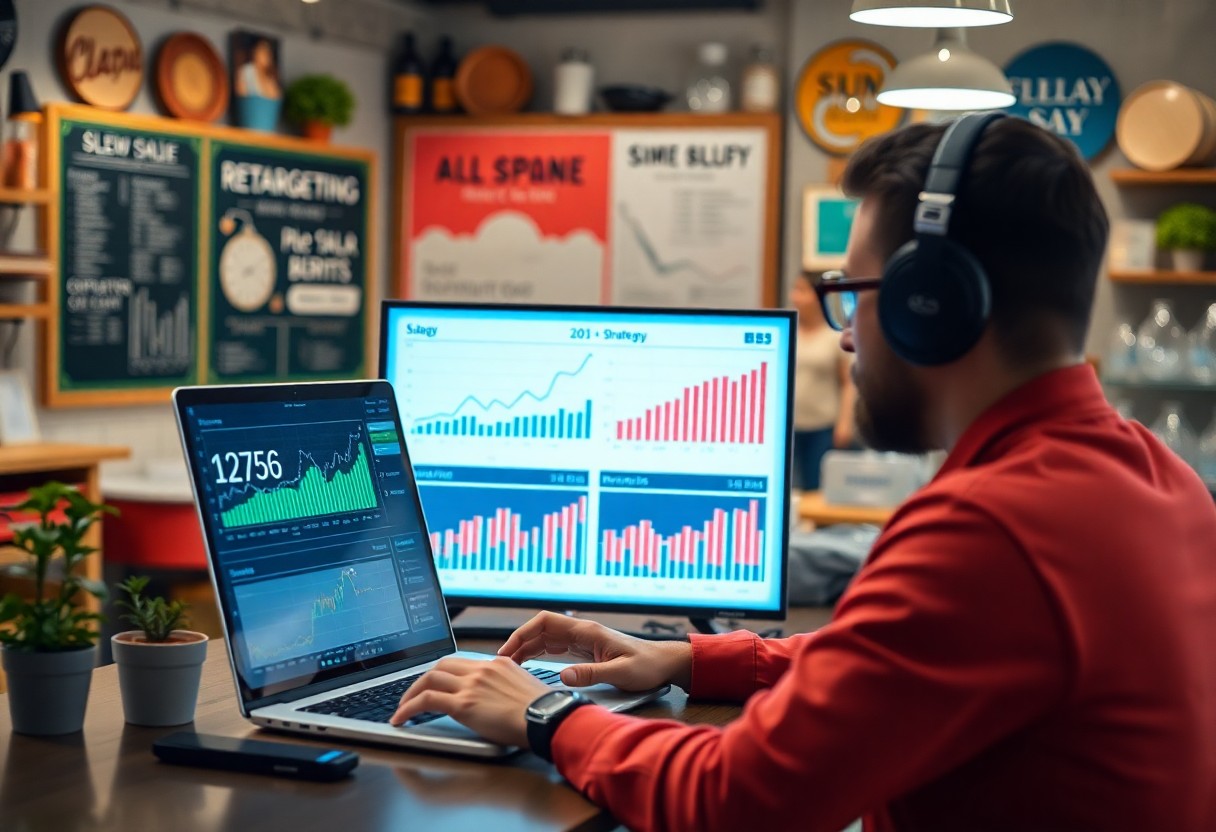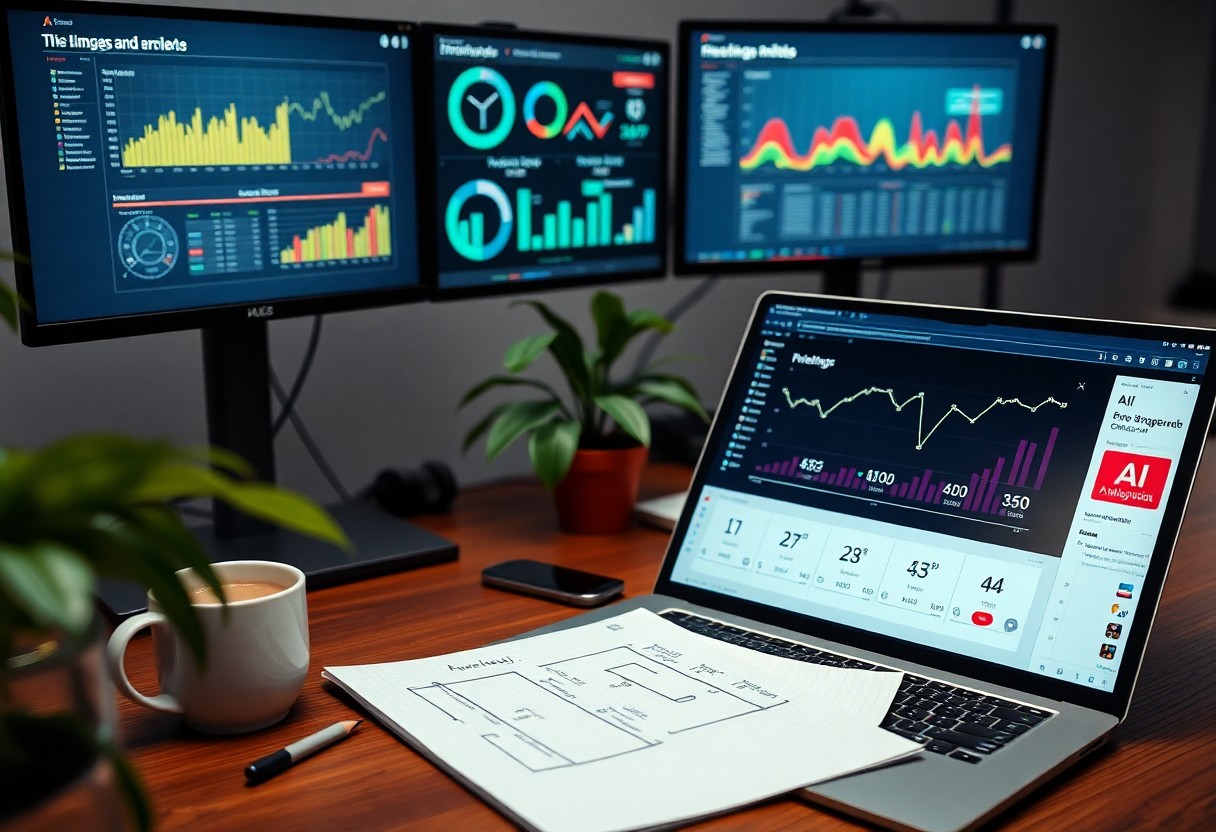
The Top AI Advertising Platforms for Small Business.
You are venturing into the dynamic world of small business advertising, and harnessing artificial intelligence (AI) can be your game-changer. AI advertising platforms streamline your marketing efforts, ensuring that your campaigns are not only effective but also tailored to your target audience. In this blog post, you will discover the top AI advertising platforms that can help you maximize your reach, optimize your budget, and ultimately drive conversions. Whether you’re just starting or looking to enhance your existing strategies, these platforms offer innovative solutions to elevate your advertising game.
Navigating the AI Advertising Landscape
With the rapid expansion of AI capabilities, small businesses must effectively navigate this evolving advertising landscape. Utilizing AI tools enables you to streamline campaigns, optimize spending, and enhance targeting efforts. Consequently, your marketing becomes smarter and more efficient, promising increased returns on investment. AI platforms not only provide insights but also automate various tasks, allowing you to focus more on strategic growth.
Defining AI Advertising and Its Unique Advantages
AI advertising refers to the integration of artificial intelligence technologies into your advertising strategies, offering unique advantages such as data-driven insights and real-time optimization. By harnessing AI algorithms, you can personalize ads to fit your audience’s preferences, improving engagement and conversion rates. Additionally, automation capabilities help cut down on manual tasks, freeing up your time for creative strategies.
Key Trends Shaping AI in Advertising for Small Businesses
Several key trends are shaping how AI impacts advertising, especially for small businesses. From predictive analytics to advanced personalization techniques, these innovations allow you to target specific demographics more accurately. Machine learning models are also evolving, enhancing your ability to gauge campaign performance and adapt strategies on the fly. As competition increases, AI tools provide a competitive edge by ensuring your advertising remains relevant and effective.
As you explore into the trends shaping AI advertising, consider the rise of voice and visual search technologies, which are becoming increasingly integral to consumer behavior. Machine learning models allow for predictive analytics, enabling your business to anticipate market changes and customer preferences with greater accuracy. The enhancement of chatbots and virtual assistants provides instant support for customer inquiries, further streamlining your processes. Staying updated with these trends ensures that your business remains agile and can capitalize on new opportunities in the constantly evolving digital landscape.
Top Players in AI Advertising for Small Enterprises
Several AI advertising platforms stand out as leaders in empowering small businesses with effective advertising solutions. By leveraging advanced technologies, these platforms help you streamline your marketing efforts, optimize your ad spend, and ultimately grow your business. Familiarizing yourself with the top players in this field can guide your strategy and ensure you make informed decisions tailored to your unique needs.
Google Ads: Leveraging AI for Targeted Campaigns
Google Ads utilizes machine learning algorithms to enhance your targeting capabilities, allowing you to reach the most relevant audience for your campaigns. With smart bidding strategies and performance predictions, Google Ads is designed to increase your return on investment (ROI) while minimizing wasted ad spend.
Facebook Ads: Harnessing Social Media Algorithms
Facebook Ads provides small businesses with powerful targeting options by utilizing sophisticated algorithms to analyze user behavior and preferences. This enables you to tailor your advertising messages to specific demographics, interests, and regional audiences, ensuring that your ads resonate with potential customers effectively.
The platform’s robust analytics tools also allow you to test various ad formats, target audiences, and campaign strategies, optimizing your ad performance over time. With options such as dynamic ads and retargeting, you can create personalized experiences for users, increasing engagement and conversion rates directly from their Facebook feeds and Instagram profiles.
LinkedIn Ads: Targeting Professionals with Precision
LinkedIn Ads specializes in B2B marketing, providing targeted advertising opportunities to connect with professionals across various industries. You can customize your campaigns to reach decision-makers, influencers, and niche audiences, significantly enhancing your chances of generating quality leads.
The platform allows you to create sponsored content, InMail messages, and text ads that speak directly to a professional audience. By utilizing LinkedIn’s advanced targeting options based on job title, industry, and company size, your ads are positioned to attract the right visitors who are more likely to convert into clients or collaborators. Additionally, LinkedIn’s insights and analytics provide you with the data you need to fine-tune your campaigns for ongoing success.
Comparing Features and Benefits
| Platform | Key Features & Benefits |
|---|---|
| AdRoll | Offers personalized retargeting, cross-channel marketing, and robust analytics tools. |
| Google Ads | Leverages vast search data, enabling hyper-targeted advertising with access to a massive audience. |
| Facebook Ads | Utilizes advanced targeting options and demographic insights to engage potential customers effectively. |
| HubSpot Ads | Integrates with other HubSpot tools for seamless marketing automation and in-depth performance tracking. |
Cost-Effectiveness: Budget-Friendly Solutions for Small Businesses
AI advertising platforms often provide tiered pricing structures, enabling small businesses to select options that fit within their budgets. Many platforms, like AdRoll and Facebook Ads, offer free trials or entry-level packages that let you test the waters before committing significant resources. This flexibility ensures you can adjust your campaigns based on performance without overspending.
Customization and Personalization Options
Creating personalized advertisements increases engagement and improves conversion rates. Most AI advertising platforms cater to these needs, allowing you to customize ads based on user preferences, behavior, and demographics. By analyzing this data, you can target specific audience segments with tailored messages that resonate with them.
Effective customization doesn’t just enhance the visual appeal of your advertisements but also aligns them more closely with potential customers’ interests. Tools like Google Ads offer dynamic ad features, allowing you to change headlines and descriptions in real-time based on user interactions. This adaptability maximizes relevance, ensuring each viewer sees content that speaks directly to their needs, ultimately driving higher conversions.
Integrating AI Tools with Existing Marketing Strategies
Incorporating AI tools into your established marketing strategies can enhance overall effectiveness. Platforms like HubSpot seamlessly fit within your current framework, providing analytics and insights that inform your advertising choices. This integration means you can leverage existing data while applying AI-driven insights to optimize campaigns without starting from scratch.
For instance, using AI alongside your email marketing can help you identify which segments of your audience are most likely to convert, allowing for tailored campaigns that speak to their specific needs. By analyzing customer journeys and interactions across multiple touchpoints, you can refine both your messaging and targeting, ensuring that all aspects of your marketing efforts work harmoniously together to boost brand visibility and engagement.

Best Practices for Implementation
Implementing AI advertising platforms requires a strategic approach to maximize your investment. Start by clearly defining your campaign goals and target audience, allowing AI tools to optimize ad delivery effectively. Developing a solid understanding of your brand’s unique selling points will help tailor messages that resonate with your audience, driving better engagement and conversion rates. You should also invest time in integrating AI seamlessly into your existing marketing framework to facilitate data sharing and campaign consistency.
Crafting Effective Ad Creatives Leveraging AI Insights
Utilizing AI insights enables you to create ad creatives that genuinely capture your audience’s attention. By analyzing viewer preferences and behaviors, you can design persuasive visuals and compelling copy tailored to resonate with your specific demographic. A/B testing variations based on AI analytics often yields valuable data, allowing you to continuously refine and enhance your creatives for maximum impact.
Monitoring Performance Metrics for Continual Improvement
Regularly tracking performance metrics is vital for refining your AI-driven advertising strategy. Utilize key performance indicators (KPIs) like click-through rates, conversion rates, and return on ad spend to evaluate your campaigns. Engaging with real-time analytics facilitates timely adjustments, helping you capitalize on successful tactics while phasing out underperforming ads.
By diving deep into performance data, you can pinpoint which ads resonate most and drive higher engagement. For example, if certain creatives lead to increased conversion rates, analyze what elements contribute to their success. Conversely, identify ads that underperform, and use this data to experiment with new approaches. Setting up regular reviews of your metrics ensures that your advertising strategies evolve effectively, leading to a more robust and efficient campaign cycle over time. Ultimately, fostering a culture of continuous improvement will position your small business for lasting growth and success in the competitive landscape.
Future-Proofing Your Advertising Strategy
Your advertising strategy needs to adapt continuously to the evolving landscape of AI technology and consumer behavior. By prioritizing flexibility and embracing new innovations, you can create a robust plan that withstands changes in the market. Keeping an eye on trends, experimenting with new platforms, and monitoring performance metrics will ensure that your advertising efforts remain effective and relevant.
Anticipating Changes in AI Technology and Advertising Trends
Staying informed about advancements in AI technology will give you a competitive edge. Subscribe to newsletters, join industry forums, and attend webinars to gain valuable insights into upcoming trends. For example, the rise of voice search and natural language processing is reshaping how ads are created and targeted, so being at the forefront of these developments enables you to refine your approach effectively.
Building Resilience Through Diversification in Advertising Platforms
Diversifying your advertising platforms mitigates risk and ensures that you’re not reliant on a single channel. By investing in multiple AI-driven platforms, you can tap into various consumer segments and marketing strategies, maximizing your overall reach and engagement. Consider exploring alternatives like social media, search engines, and email marketing automation to create a well-rounded advertising presence.
Building resilience through diversification in advertising platforms means recognizing the potential pitfalls of relying solely on one avenue for your marketing efforts. For instance, if a specific platform experiences a sudden decrease in user engagement or changes its algorithms, you won’t be at a standstill. Instead, spreading your budget across platforms like Google Ads, Facebook Ads, and emerging technologies will give you more opportunities to reach your audience in different ways. This strategy not only balances potential failures but also allows your small business to capitalize on the unique benefits each platform provides, creating a more robust overall marketing strategy.
Conclusion
Now that you have explored the top AI advertising platforms for small businesses, you can make informed decisions to enhance your marketing efforts. By leveraging these innovative tools, you can optimize your campaigns, target the right audience, and achieve greater efficiency. Each platform offers unique features suited to different business needs, so consider your objectives and budget carefully. With the right approach, you can elevate your advertising strategy and see significant growth in your business.


